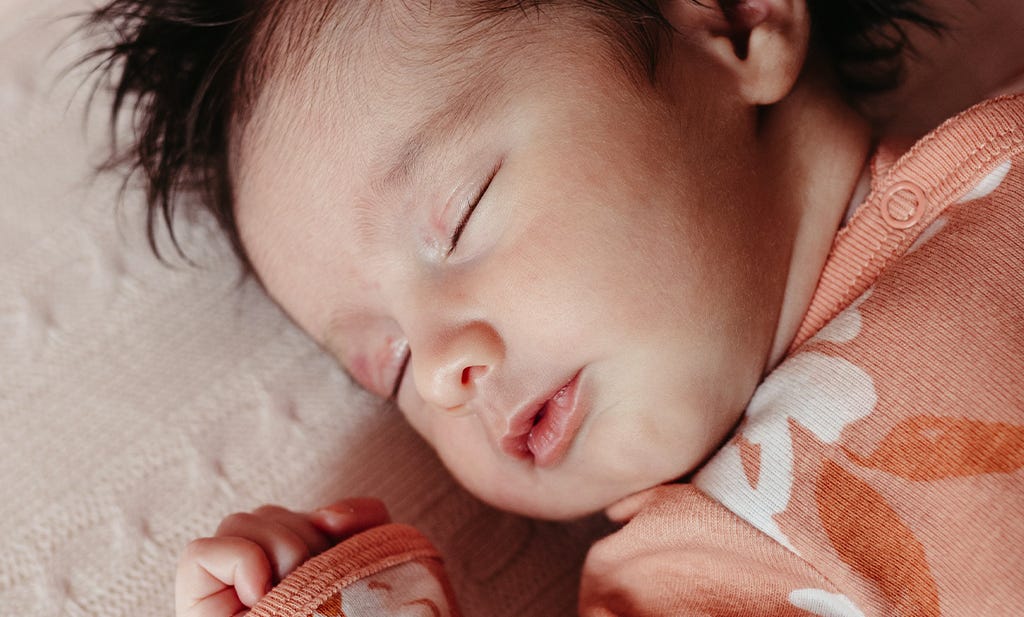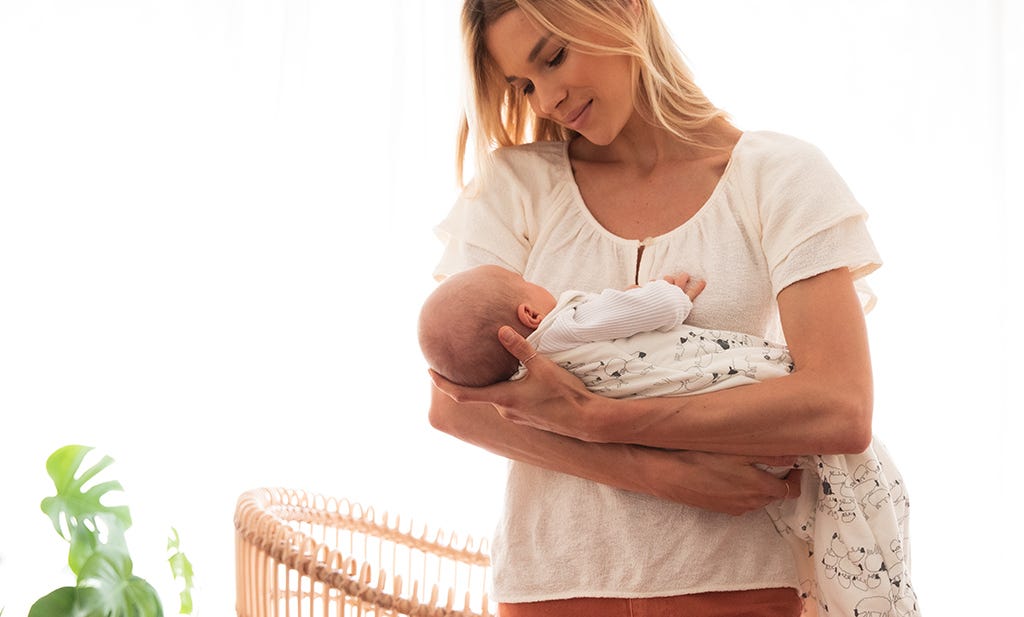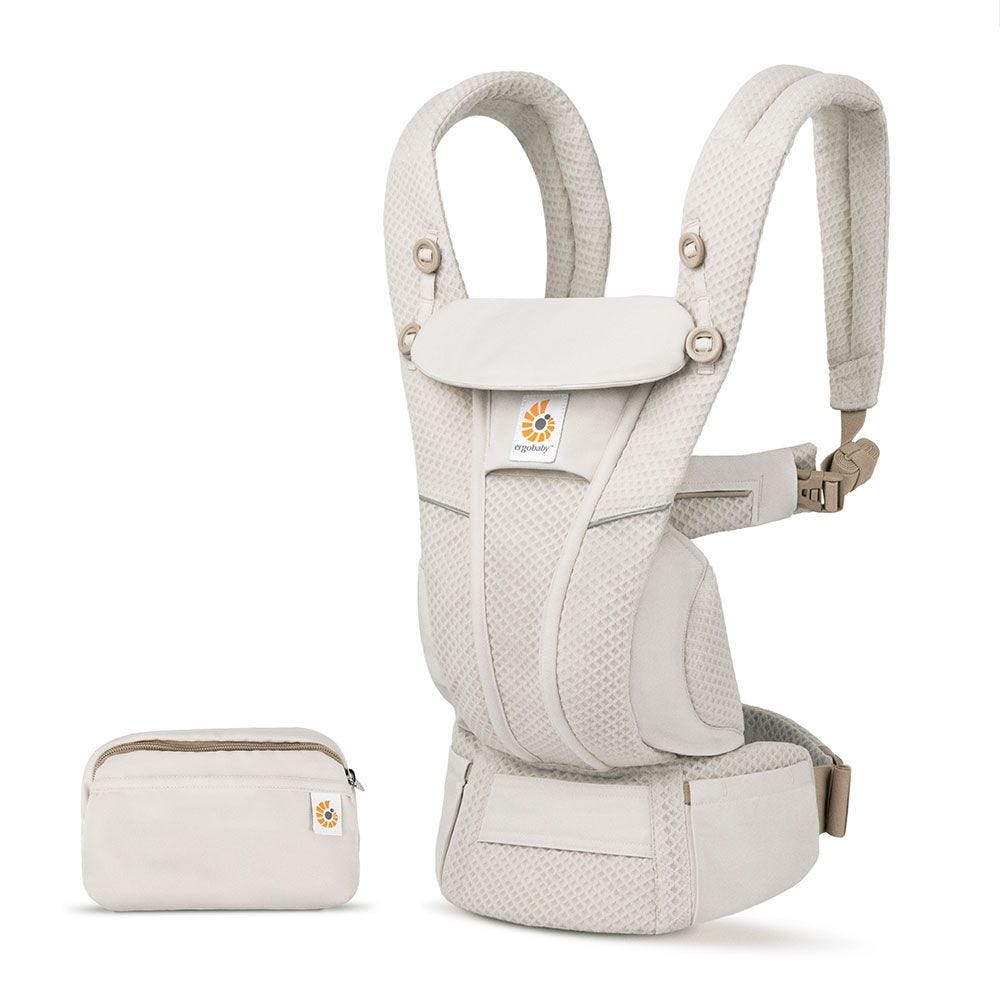
From traditional lullabies to high-tech white noise machines, using songs and music to help babies sleep is an age-old tradition for a reason. Our UK sleep specialist Gemma Coe is a mum of two and a certified baby and child sleep consultant. She helps families all over the world develop healthy sleep habits. Today she’s sharing with us her thoughts on whether white noise or lullabies or both are the key to a great night’s sleep.
What is it about a song or lullaby that helps little ones fall asleep?
Have you ever found yourself singing that lullaby to your baby with a sense of peace and calm? Sensing the slow, repetitive nature of the song and how it can tie naturally in with gentle rocking and movement? Song, the sense of presence, and the gentle rocking or patting motion or other repetitive movements, can certainly help calm fussy babies and help manage a (sometimes fraught) transition between day and night.
Adding some 'music therapy' into your bedtime routine is a win! Check out the examples below for some ideas to start with but there are plenty of reasons why nursery rhymes stick around. They've been tried and tested over many generations and have stood the test of time for a reason. Typically, they have quite rhythmic and predictable melodies that promote a sense of calm. Researchers at Harvard Music Lab found that lullabies helped calm babies – in any language! They found it decreased their heart rates and dilated their pupils, consistently throughout the first year of life.
While the music may not 'send' them to sleep, it helps to create a nice environment in which they can switch off and calm and relaxed babies are well primed for good quality sleep. The same music or background noise can also help to set the scene and provide an element of familiarity and therefore predictability. It can act as a 'sleepy cue' for your baby - a strong signal about what's coming next. As you probably know from your 'adult' bedtime routine, the same things every night help create a familiarity, and knowing what comes next helps the body feel secure.
What are the other benefits of playing music to children before sleep?
We've discussed the benefits related to helping your little one sleep, but there are others too. Research shows lullabies help to stimulate language development and the one-to-one time can help strengthen the bond between parent and child.
Music can also reduce stress hormones like cortisol and release the good hormone oxytocin. For example, one study found that oxytocin increased when a slow-tempo music sequence was presented, while levels of cortisol decreased when a fast-tempo music sequence was presented.
And the same rules apply to everyone, young and old so the effects don’t have to stop at bedtime lullabies for babies.
What music helps put babies to sleep?
Many families like to use the one or more of the following to create a nice peaceful sleep set up:
- Singing lullabies for babies: try Twinkle, Twinkle Little Star, Rock-a-Bye Baby, Hush Little Baby - they all have rhythmic melodies and are easy for you to sing the lyrics on loop
- Lullabies playlists (streamed via music playing apps on a home speaker)
- Classical music
- Heartbeat/womb noises
- White noise machines
Whether you choose to play lullabies for babies or soft music on a device, are happy singing to your baby, or are using white noise - they can all be integrated as an important part of the bedtime routine. Remember, emotions transfer, so a calm, peaceful parent, singing soft and gentle lullabies to their baby will certainly help promote a sense of calm and relaxation. The very set up we need to relax into sleep.
Is white noise or lullabies better for babies?
As a sleep specialist, I'm a huge fan of white noise for babies. It has consistency - which is pretty much my favourite thing ever! It acts as a constant in the room and can also help drown out other noises such as those in the household (doors slamming, noisy siblings) and those in the wider environment too (cars outside, birds tweeting, thunderstorms).
It helps set the scene where your baby falls asleep in the same environment that they will wake up in at night as it is the same sound all night long. So, my preference would be having white noise during the night and for a nap.
Lullabies are great for scene setting though, so calming a fussy baby, or as part of the winddown routine and then switching over to your white noise machine when you're popping them down to fall asleep.

A few tips to remember when using music or white noise to help baby sleep
Let's discuss volume. You can download a decibel metre on your phone and place it in the cot where your child would be sleeping to test how loud to have your machine set. We wouldn't want the sound to exceed 50dB and you should also place the white noise machine about 7ft (2 metres) away from your baby (based on recommendations by the American Academy of Pediatrics).
Many of my families worry about their child becoming reliant on white noise or music to send them to sleep and worry about travelling etc. It's so easy to get a portable white noise machine now or you can just use your phone when out and about. However, 'weaning' your baby off white noise is easy. When their sleep is better and everyone feels more rested, you can start to change things up. Simply just reduce the volume of the white noise by a couple of decibels every night until it sits in the background and then is off. However, many older children and even adults have white noise too so it’s up to you and your little one/s how you use it.
So which is best to help baby sleep? Lullabies or white noise?
It's clear that any kind of music: lullabies, white noise, singing, special playlists etc. are all incredibly useful tools when navigating baby sleep. And everyone in your family’s sleep! But for me, incorporating lullabies into your winddown routine and then using white noise for the duration of the nap or nighttime is my winning combination.
You can check out more from Gemma on her website here, or on Facebook and Instagram.





















